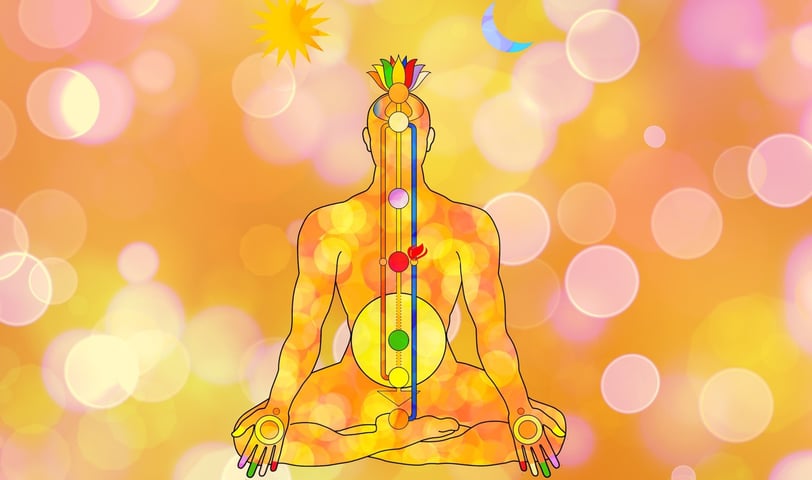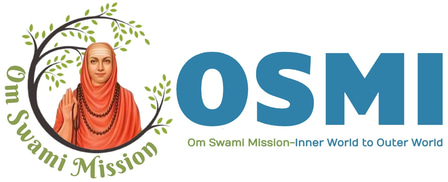What are Chakra Obstructions and understanding Marma-Varma Points
When kundalini begins its ascent, it requires a completely clear pathway. Any obstacles in its path can prevent kundalini from rising through the central channel of the spinal cord. We've previously explored these topics in depth in our kundalini series. It's important to understand how to eliminate any blockages while practicing kundalini meditation. Often, practitioners encounter these blockages and may be unsure of how to address them.


Marma Point: When kundalini begins its ascent, it requires a completely clear pathway. Any obstacles in its route can prevent kundalini from rising through the central channel of the spinal cord. We've previously explored these topics in depth in our kundalini series. While practicing kundalini meditation, it's essential to understand how to eliminate any blockages. Often, practitioners encounter these blockages without knowing how to address them. Let's delve into the methods for removing these obstacles. As we've noted, the physical body is composed of three gunas: satwa, rajo, and tamo. These gunas are linked to the five fundamental elements: akash (ether), vayu (air), agni (fire), water, and earth. The interaction of these gunas with the elements results in three types of doshas, which can be understood as bodily fluids like blood. When these doshas are balanced within the body, overall health is maintained. However, an imbalance can disrupt health and energy levels, leading to blockages in the kundalini pathway. These blockages, often referred to as energy or chakra blockages, can be alleviated by applying pressure and massaging specific marma points associated with the blockages. Known as varma points, these areas are crucial for the intertwining of nerves, blood vessels, and ligaments. Most marma points are located in areas with cavities or openings.
The locations of the marma points allow them to connect the external cosmic energy with the internal energy produced by prana and its variations, like apana. When marma points are impacted, the flow of prana between chakras can be disrupted, leading to blockages. These blockages are primarily alleviated through pranayama and specific yoga poses. This is why certain breathing and stretching exercises are essential. Let's explore how to clear blockages in the heart chakra area. There are two marma points located in the back, known as ‘brihati.’ These points are situated near the lower ends of the shoulder blades, with half of each marma point residing in the scapula and the other half in the surrounding muscle. To begin, apply some oil for lubrication (a few drops of eucalyptus oil can be beneficial) and gently massage these two marma points in a circular motion for about five minutes, using moderate pressure. Once this is done, move to the front of the body where the ‘hridaya’ marma is located at the center of the sternum. After lubricating this area, massage the hridaya marma with very light pressure, as applying too much pressure could negatively impact the heart. By treating these two marma points (brihati and hridaya), you can effectively remove blockages in the heart chakra.
Varma Points: There are two marma points known as ‘krikatika,’ located on either side of the neck. In most cases, these points require proper massage, as energy can become blocked in this area due to poor posture. Engaging in regular neck exercises can help alleviate this energy congestion. This blockage can occur for two main reasons: first, the incorrect positioning of the head during kundalini meditation, whether it is held straight or pushed forward. The ideal posture involves a slight backward tilt of the head. The second reason is failing to maintain a straight spine; there should be no curvature in the spine while practicing kundalini meditation. The ‘krikatika’ marma points are found where the neck meets the head, and their protrusion makes them easy to locate. Applying firm pressure during massage is beneficial, and using sesame oil mixed with a few drops of eucalyptus oil can enhance the experience. Addressing these marma points helps eliminate blockages above the throat chakra, allowing kundalini energy to rise smoothly to the third eye chakra. Additionally, there are two significant marma points in the body, one located at the ajna chakra and the other at the opening of the sahasrara. The first, called ‘sthapani,’ is positioned precisely between the eyebrows, just above the nasal bones. For kundalini to ascend from the ajna chakra to the sahasrara, it must navigate through several minor yet potent chakras. The ajna chakra often experiences prana congestion and blockages, as it is closely linked to the mind. A partially activated ajna chakra can create more issues than a completely dormant one. The control of one’s spirituality is influenced by the kundalini at the ajna chakra.
Higher planes provide additional guidance to the sadhaka, so it's essential to ensure there are no blockages from the ajna chakra onward. If blockages occur around the ajna chakra, it can lead to health issues such as stiff shoulders, pressure in the forehead, tension in the back of the head, and eye problems like glaucoma. During meditation, it's important to concentrate on this marma point, as it plays a crucial role in enhancing concentration and is closely linked to the pituitary gland. To alleviate any congestion, gently massage this area for about five to ten minutes using circular motions and applying pressure, which will help clear blockages from the ajna chakra to the sahasrara. The key marma point in the human body is known as ‘adhipathi,’ located at the top of the skull. This point is associated with the sacred pineal gland, which facilitates internal illumination during meditation. There is an opening in this region that allows cosmic spiritual energy to flow into the body. Any congestion or blockage here can hinder this energy from entering. A specific oil called ‘tullia narayana taila’ is highly effective for massaging this area. Mixing a few drops of eucalyptus oil with this taila creates an excellent blend for activating the crown chakra and clearing any blockages in the sahasrara. Use your index finger to massage this marma point, or you can apply moderate pressure with your palms. You can use the maximum pressure possible with your index finger, massaging in circular motions for five to ten minutes. Kundalini meditation will generate heat in the body.
Typically, the heat will decrease once the mediation concludes. If the heat persists, consider using ‘neela bringadhi tailam’ in that area instead of tullia Narayana taila. If you can dedicate ten minutes each day, try massaging the last two marma points, sthapanii and adhipathi, before your bath for about 15 days. If you can't find the recommended oils, sesame oil or almond oil mixed with a few drops of eucalyptus oil will work as alternatives. Sesame and almond oils serve as carrier oils to minimize friction. Remember, it's important to use aroma oils with a carrier oil to prevent skin irritation.
